#Niepce
Text


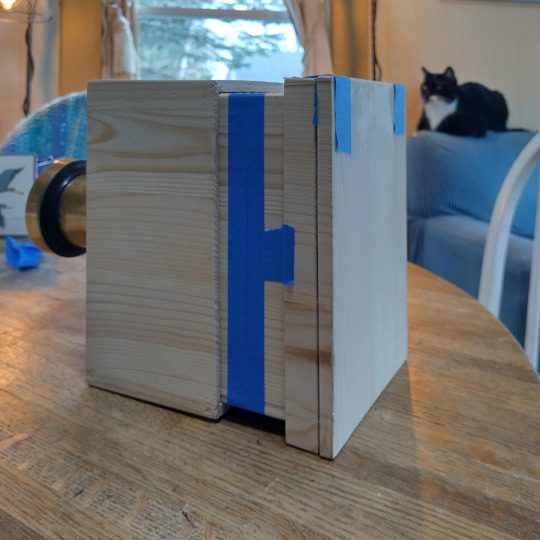



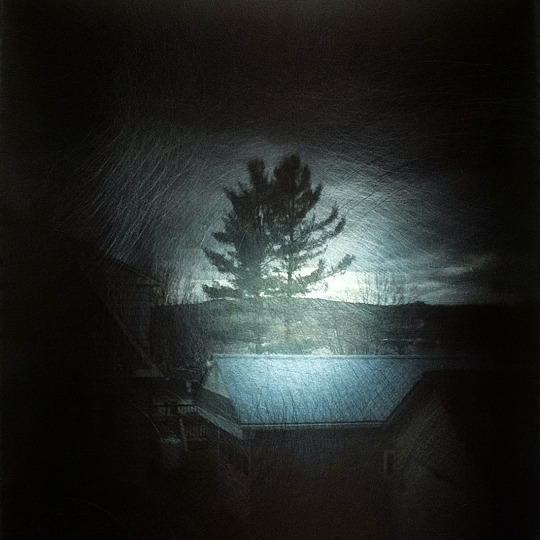
22 April 2024 - Camera Obscura
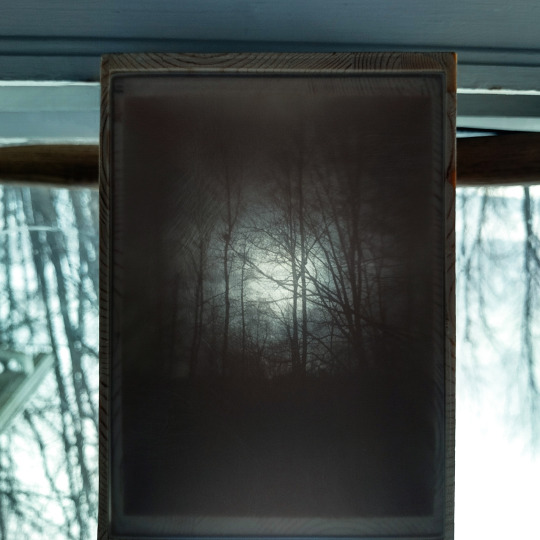

I am building a mid-1800s camera. A camera obscura, to be accurate. I hope to recreate the methods by which the earliest known photographic images were created by Joseph Nicéphore Niépce in the late 1820s. We are approaching the 200th anniversary of his oldest known camera photograph.
The camera is built by hand - no power tools. As I figure out the structure, I temporarily tape the pieces in place. If they work, I'll glue them in place.
Today, I set my focusing window in place. It works! I took it onto my porch, pointed it across my yard, then took photos of what I saw on the focusing window. I flipped the images so you can see them right-side up.
In theory, this contraption will enable me to use other early photographic methods. Stay tuned!
#nicephore#niepce#traditional photography#daguerreotype#camera obscura#heliograph#alternative photography
2 notes
·
View notes
Photo

"Etudiante dans un Café du Quartier Latin, Rue Soufflot" par Janine Niépce (1964) à l'exposition "Parisiennes Citoyennes ! Engagements pour l’Emancipation des Femmes (1789-2000)" du Musée Carnavalet, octobre 2022.
34 notes
·
View notes
Photo

Un día como hoy 19 de Agosto se celebra el Día Mundial de la Fotografía. El primer procedimiento fotográfico se desarrolló en el año 1839, cuando Louis Daguerre (pintor, decorador teatral y primer divulgador de la fotografía,) tras inventar el daguerrotipo, perfeccionó la técnica de Joseph Nicéphore Niépce (químico, litógrafo y científico aficionado que inventó, junto a Daguerre, el primer proceso fotográfico exitoso que se menciona) y lo presentó en la Academia de Ciencias de Francia. Este procedimiento se basó en la invención del Daguerrotipo, que consiste en la obtención de una imagen sobre una superficie de plata pulida como un espejo. Para economizar, normalmente las placas eran de cobre plateado, pues solo era necesario disponer de una cara plateada. El 19 de Agosto fue elegido como el Día Mundial de la Fotografía porque ese mismo día, en el año 1839, el Daguerrotipo fue establecido como la primera práctica del proceso fotográfico. La divulgación del descubrimiento y la adquisición de la patente por parte del gobierno francés, permitió que la técnica de captura de la imagen desarrollada por Niepce y Daguerre se extendiese por todo el mundo, sobre todo a lo largo de América y Europa. Ello facilitó el perfeccionamiento y evolución del procedimiento, así como de las cámaras fotográficas, hasta lo que conocemos en la actualidad. #UnDiaComoHoy #DiaMundialdelaFotografia #louisdaguerre #Daguerre #NicephoreNiepce #niepce #fotografia #diadelafotografia #daguerrotipo #JosephNicéphoreNiépce https://www.instagram.com/p/ChcJqz1OMeI/?igshid=NGJjMDIxMWI=
#undiacomohoy#diamundialdelafotografia#louisdaguerre#daguerre#nicephoreniepce#niepce#fotografia#diadelafotografia#daguerrotipo#josephnicéphoreniépce
2 notes
·
View notes
Text
Jubiläum: 185 Jahre Fotografie

View On WordPress
0 notes
Photo

Happy World Photography Day! Today is a special day that celebrates the art, science and history of photography and is closely connected with the development of photo art and the evolution of photography. On August 19, Joseph Nicephore Niepce and Louis Daguerre’s invention of the daguerreotype was registered as a patent, bringing forth the world of photography to us all. #worldphotographyday #agfaprofessional #daguerreotype #niepce #kodakportra160 #fujichrome64t #polaroid665film #agfabrovirapaper https://www.instagram.com/p/ChdFY8aPo0dpsl5qcFxfrvJwGl_Z60rV0j_cB80/?igshid=NGJjMDIxMWI=
#worldphotographyday#agfaprofessional#daguerreotype#niepce#kodakportra160#fujichrome64t#polaroid665film#agfabrovirapaper
0 notes
Text
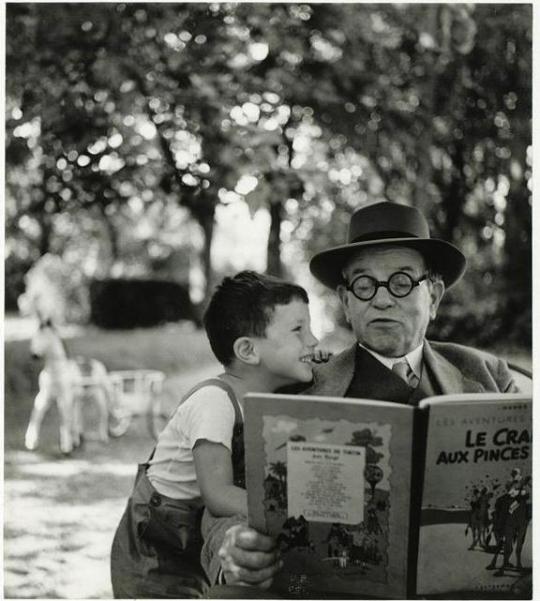
Janine Niepce
296 notes
·
View notes
Text

Bonjour, bonne journée ☕️ 🥖
La baguette, au coin de la rue, 4e🗼 Paris 1981
Photo de Janine Niépce
#photography#photooftheday#black and white#vintage#janine niepce#paris#baguette#bonjour#bonne journée#fidjie fidjie
72 notes
·
View notes
Text

Janine Niépce (February 12, 1921 – August 5, 2007)
87 notes
·
View notes
Text

La vogue des bandes dessinées. France, 1956
Photo: Janine Niepce
63 notes
·
View notes
Text

Janine Niepce, Nu juvenile, Paris, 1958.
66 notes
·
View notes
Text
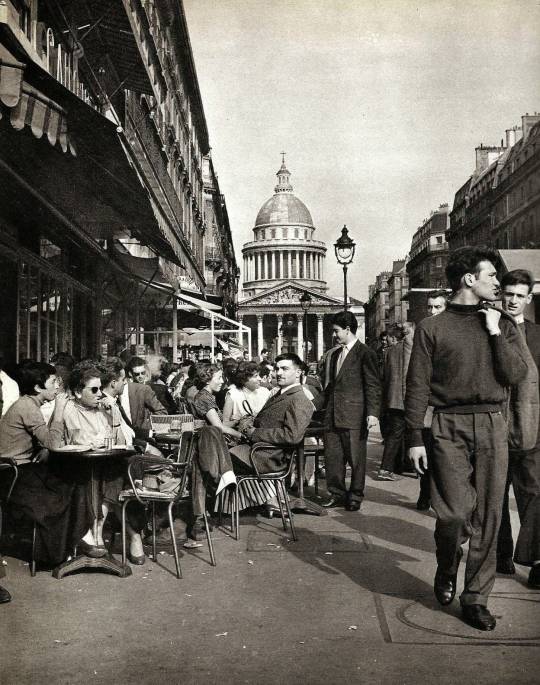
Janine Niépce (Française, 1921-2007), Terrasse du Café Capoulade, Rue Soufflot - Panthéon, Paris, circa 1950. - source J-Arts.
52 notes
·
View notes
Photo

Janine Niepce.
9 notes
·
View notes
Text

Colette par Janine Niépce à son domicile au Palais Royal, Paris, 1953.
5 notes
·
View notes
Photo

The First Daguerreotype Photo
In the early 19th century, photography as we know it today did not exist. The process of capturing images was a cumbersome and time-consuming one, requiring extensive knowledge of chemistry and optics. It wasn't until 1839 that the French inventor Louis Daguerre changed the course of history with his revolutionary process, the daguerreotype. The first photograph ever made using this process was known as the "View of the Boulevard du Temple."
Louis Daguerre and the Daguerreotype Process
Louis Daguerre was a French artist and inventor who, together with Joseph Nicéphore Niépce, developed the daguerreotype process. This process involved exposing a silver-coated copper plate to iodine vapor, which created a light-sensitive surface. The plate was then exposed to light in a camera, and the image was developed using mercury vapor. The resulting image was a unique, one-of-a-kind photograph with exceptional detail and sharpness.
The "View of the Boulevard du Temple"
The "View of the Boulevard du Temple" is one of the most famous photographs in history. It was taken by Daguerre in 1838 or 1839, and it depicts a busy street scene in Paris. The image is remarkable for several reasons, not the least of which is that it is the earliest known photograph of a human being.
The Challenges of Capturing the Image
The process of taking the "View of the Boulevard du Temple" was not an easy one. The daguerreotype process was notoriously difficult to work with, and it required a great deal of skill and experience to produce a good image. Daguerre himself struggled with the process for years, and it was not until he teamed up with Niépce that he was able to create a practical photographic process.
The Significance of the Image
The "View of the Boulevard du Temple" is significant for several reasons. First, it is the first known photograph to depict a human being, although the person is likely to have been a street vendor who was standing still long enough to be captured by the long exposure. Second, the image is a striking example of the daguerreotype process, which was the first practical method of photography. Finally, the image is a window into the past, giving us a glimpse of life in Paris in the mid-19th century.
Preservation and Legacy
The original daguerreotype plate used to create the "View of the Boulevard du Temple" is now lost, and only a few copies of the image exist. Nevertheless, the photograph remains an important part of photographic history, and it continues to inspire and influence photographers today. The daguerreotype process may have been superseded by newer, more efficient methods of photography, but its legacy lives on in the form of this iconic image.
Conclusion
The "View of the Boulevard du Temple" is a remarkable photograph that captures a moment in time in the early history of photography. It represents the culmination of years of experimentation and hard work by Louis Daguerre and Joseph Nicéphore Niépce, and it is a testament to the enduring power of the daguerreotype process. Today, the photograph serves as a reminder of the incredible advances that have been made in the field of photography, and it stands as a testament to the creativity and ingenuity of the human spirit.
Source: The Daguerreotype Camera: A Revolution in Photography
#daguerreotype#daguerreotype camera#daguerreotype photo#photography history#camera history#boulevard du temple#louis daguerre#joseph nicephore niepce#19th century photography#photography legacy#photograph history
7 notes
·
View notes

